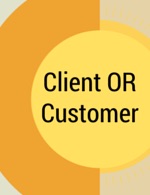- 1. Give Everything to the Same Designer the First Time
- 2. Your Font Choice Matters More Than You Think
- 3. The Colors You Choose Convey Different Emotions
- 4. Claim Every Profile You Can & Use Specific Sizes
- 5. Develop a Tone of Voice, and Stick to It
- 6. Speak Directly to Your Customers
- 7. Pull Inspiration from Million Dollar Brands

With large companies throwing millions upon millions of dollars at their brand image in an effort to stay relevant and compete in billion dollar industries, your branding as a smaller business is more important than ever.
If you get your branding and messaging right, you will have a much easier time sticking in your customer’s minds, and being the first company they think of when it comes to finding a solution to the problems that your services or products solve.
Get it wrong, though, and you’re going to be stuck in a sea of amateurs spinning their wheels, trying to figure out why you’re not getting the traction you think your business deserves.
1. Give Everything to the Same Designer the First Time
Consistency is critical with your branding. If you’re going to put the money into making sure your branding accurately portrays your messages, your values, and your business, you’re going to want to make sure that there is only one person or one team working on the project for you.
If you’re putting together each piece of the puzzle, one piece at a time, you’re going to end up with an inconsistent message. By the time you realize the error of your ways, you’ll usually have to start back from square one.
While most designs can be replicated, a designer’s style cannot. There will be certain cues that one designer can pull off, while another one struggles and resorts to using their own style instead. This is what leaves your messaging inconsistent.
2. Your Font Choice Matters More Than You Think
What messaging are you trying to get across with your branding? The font that you choose will either help you communicate it, or create a conflict.
For instance, if you’re trying to show that you’re a professional brand, and selling your products or services only to professionals, you don’t necessarily want to use an energetic font. Perhaps a serif font, like the New York Times use in their logo, would be a better fit.
On the same token, if you’re a young, hip startup, you don’t necessarily want to use a stuffy font that’s typically seen in investor newsletters designed for 50 to 60 year old men looking to retire after a long career in the corporate world.
3. The Colors You Choose Convey Different Emotions
Whether you realize it or not, the colors you use convey different emotions. Take a look at what some of the more common colors tend to do to people, and how they make them feel about your business.
- Red: Using red in your branding shows your audience that you’re energetic, passionate, and intense. Think about brands like Coca-Cola and Red Bull.
- Yellow: Using yellow in your branding shows that you’re optimistic and joyful. Brands like Ferrari, Shell, and Best Buy are all perfect examples of the beaming yellow color.
- Orange: When you use orange in your messaging, you’re giving off the vibe that you’re creative, determined, and unique. Home Depot, Fanta, and Firefox are all great examples.
- Pink: If your brand wants to put across a feminine message, using pink in your graphics is a great way to do it. Some notable brands that are more feminine in nature are Barbie and the Oxygen Network.
- Blue: The color blue helps you portray trustworthiness, calm, comfort, and reliability. Some of the world’s biggest brands use blue, like IBM, Samsung, Intel, GE, and Ford Motors.
- Black: Some brands that use black in their messaging are making a point that they’re luxurious, bold, mysterious, and serious. Think about Bentley Motors.
4. Claim Every Profile You Can & Use Specific Sizes
When people search for you online, you want them to be able to easily find you, no matter what platform they’re using. That’s why you need to claim profiles for your business every chance you get.
Don’t just think about the most common platforms, either. While Facebook, Twitter, Instagram, Pinterest, and Google+ are the first stop for most businesses, you can gain a lot of traction by claiming profiles on some of the lesser known platforms.
As customers search for you, they won’t just find your website. They’ll see the same messaging wherever they visit.
5. Develop a Tone of Voice, and Stick to It
Your branding doesn’t just include the images you’re using, or the font that graces your website’s pages. It goes much deeper than that. Customers want to know who you are, why you do what you do, and how you’re going to solve the problems that they’re having.
If you haven’t already figured out your mission statement, or know why you’re doing what you’re doing — what really drives your business forward (other than profits) — you’re leaving money on the table.
By getting very specific about your messaging and who your target customer is, you’ll have a much easier time making sales, because your target audience will know that you’re speaking specifically to them.
6. Speak Directly to Your Customers
This goes back to your mission statement and what drives you. When you figure it out, understand who your target customer is, and why you’re in business (to serve their problems with your solutions), you can speak directly to them in the copy that you create.
The text you use for your website copy, the advertisements, and how you speak to customers through your customer service channels will all start to come together.
When it does, you’ll gain a ton of clarity, and be able to set clear goals that are designed around helping to deliver those products and services to your customers.
As this happens, you’ll notice that your conversion rates will skyrocket.
Customers that see your advertisements will be more inclined to click through, visitors to your landing pages will be more inclined to give you their email address, and the subscribers that see your emails are going to be more inclined to give you their money.
7. Pull Inspiration from Million Dollar Brands
When all else fails, and you’re having trouble figuring out the brand messaging you actually want to get across to your customers, take a step back and look at how the big brands are doing it.
Most of the time, they make things as possible in order to have mass appeal. You don’t necessarily have to do that and, arguably, shouldn’t try — unless you’re spending as much on advertising as they are.
Instead, work on building your own brand using these companies as inspiration. Tighten up your branding, and you’ll get measurable results from your effort. Well-known branding also means your business will be worth more, should you ever decide you want to sell out and move onto new ventures.
Always remember, though, that they’re major, billion dollar brands. When you’re just getting started selling products or services, you won’t have the necessary budget to compete with them.
Thankfully, that gives you a leg up because you can provide a better customer service experience. And when your customers see that you’re serious about your brand image, they’ll take you more seriously, too. That’s why so many small and “boutique” companies are are able to make such a big impact online these days.
 Andrew James
Andrew JamesAndrew has been involved with business and Amazon FBA & Amazon Affiliate Program for over a decade. He enjoys being in the trenches and doing all the hard work with an interest in technology, design, and SEO. His goal is to turn an ugly site into a powerful money-making machine. Successfully launching products gets easier when you have a website that helps legitimize your brand. Brand Builders specializes in helping FBA sellers launch their brand with highly customized websites that showcase your products.



